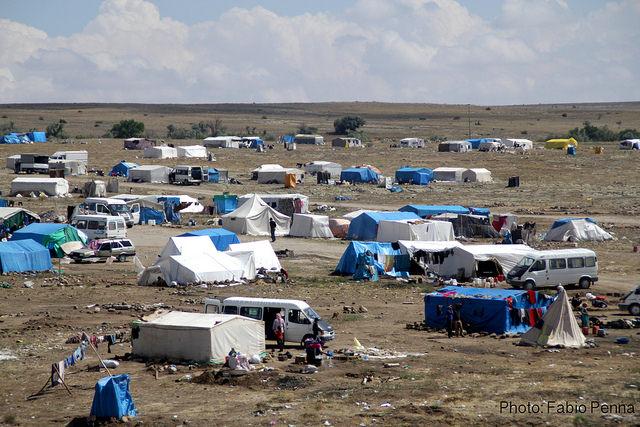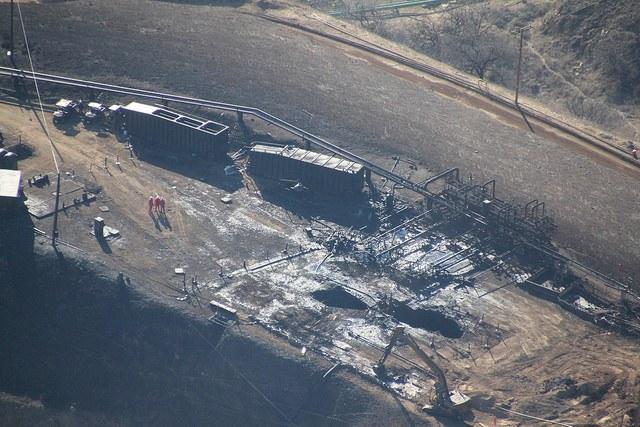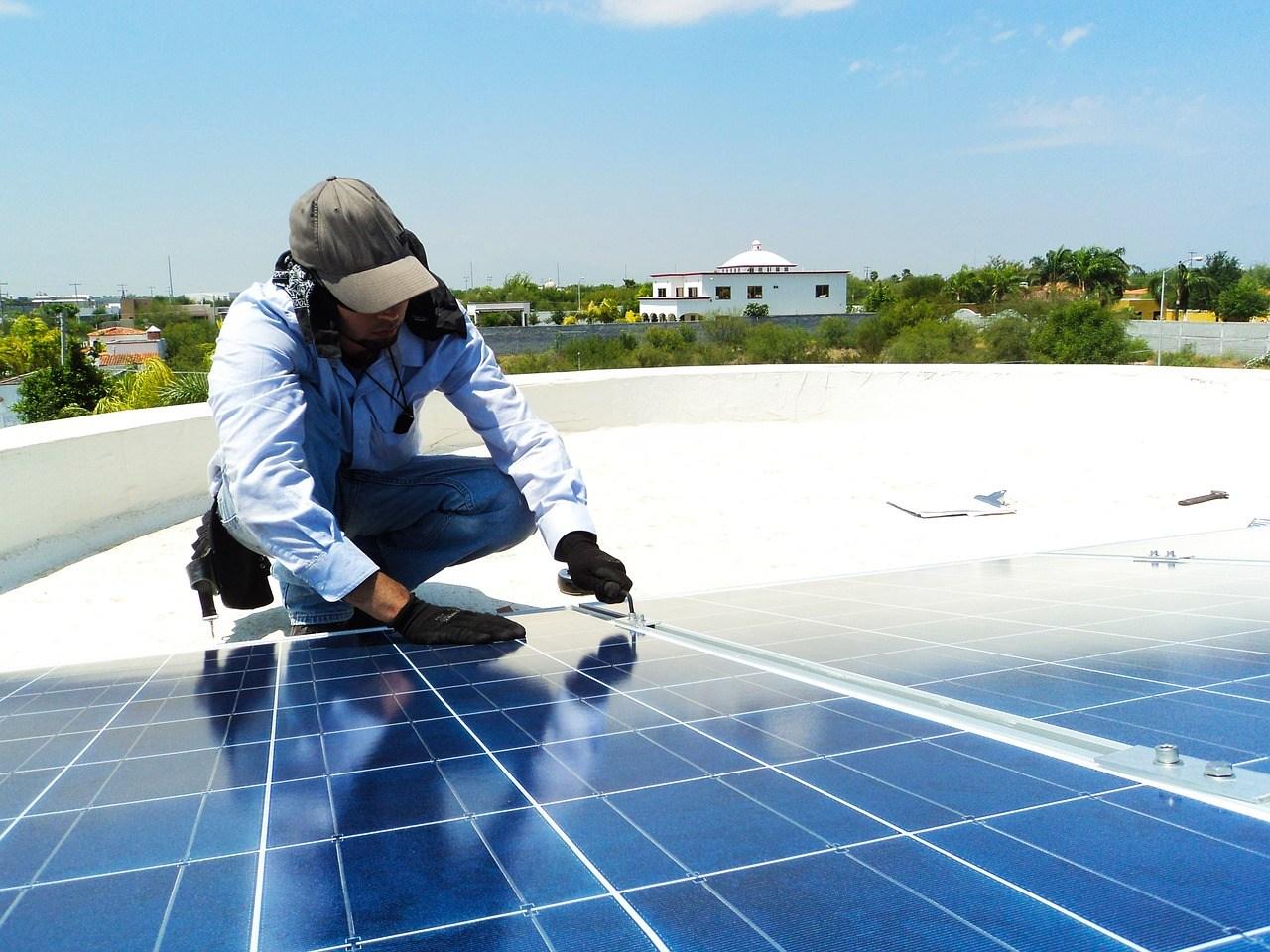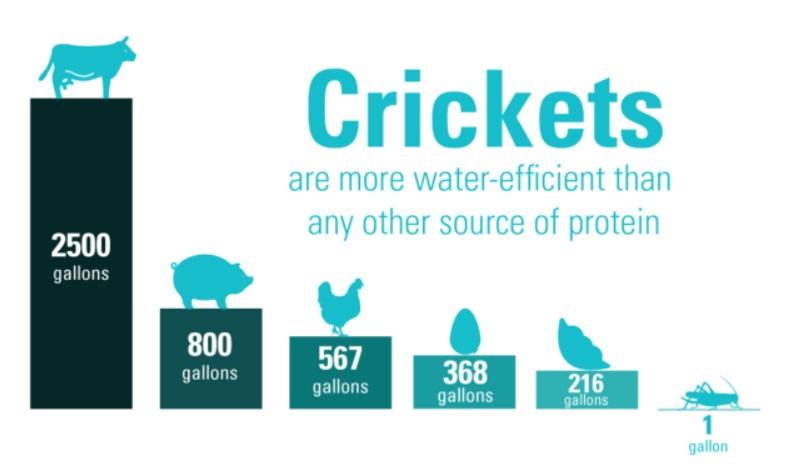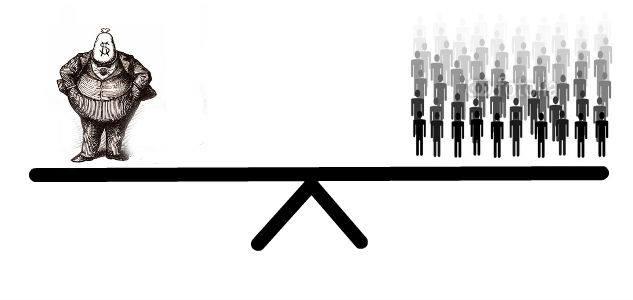By The Climate Trust
The Climate Trust, a mission-driven nonprofit that specializes in mobilizing conservation finance for environmental benefit, announced its third annual prediction list of 10 carbon market trends to watch in 2016.
The trends, which range from climate change playing a larger role in federal decision-making to increased carbon market linkage and momentum in conservation finance, were identified by The Climate Trust based on interactions with their diverse group of working partners—government, utilities, project developers and large businesses.
"The Trust pays close attention to market signals throughout the year, identifying areas where we can have the greatest impact," said Sean Penrith, executive director for The Climate Trust. "Each year, we look forward to putting together our team's collective knowledge and sharing our industry insights."
Carbon pricing will play a key role for many jurisdictions worldwide as they plan to meet their emission reduction targets from the Paris negotiations. Roughly 25 percent of the world’s emissions now fall under some form of carbon pricing system. In the aftermath of the Paris negotiations, this percentage is only expected to grow, as countries will be examining low-cost, high-impact options to comply with the nationally-determined emission reduction goals that they have submitted to the UN. Several jurisdictions worldwide have expressed interest in cross-border emissions trading, to lessen the potential economic risks from acting unilaterally.
The Carbon Pricing Leadership Coalition (CPLC), launched on the first day of COP21 in Paris, brings together key governments along with nearly 90 global businesses and NGOs to strengthen and expand carbon pricing worldwide. We expect to hear many more announcements of national carbon pricing initiatives in the coming year, as well as announcements of interest in linkages to and among existing systems. In addition, countries are confronting — for the first time — how setting and keeping emission reduction goals can be made easier by coordinating all their domestic climate policies in service of these goals; therefore, we expect to see more academics, industry groups and government coalitions weighing in on these opportunities for “complementary” policy.
In Oregon, policies related to clean energy will take center stage in 2016. Importers of transportation fuels will be under obligation to comply with the state’s Clean Fuels Program in 2016. This program is designed to reduce the carbon intensity of transportation fuels 10 percent by 2025, by integrating more low-carbon fuels (like ethanol and biogas) into the fuel supply. In addition, the 2016 ballot is very likely to contain initiatives that would increase Oregon’s acceleration of a clean energy transition, including phasing out the use of coal-fired electricity and increasing the state’s renewable portfolio standard.
Finally, carbon pricing will remain a topic of discussion during the 2016 legislative short session, as bills advance which could add enforceability to our state’s emission reduction targets by capping emissions from various economic sectors. We predict passage of at least one clean energy-related ballot measure this year. Carbon pricing in Oregon is still at least a year away, as even if a legislative bill were to pass in 2016, the state would need time to design and implement its optimal strategy.
Climate Risk Gets Real for Private Industry. Beginning with the groundswell at Climate Week in New York in September 2015, and becoming more strident at the Paris climate summit, it is clear that the era of managing and disclosing a corporation’s exposure to climate risk has arrived.
Nothing could have sent a clearer signal to the business community — Mark Carney, the governor of the Bank of England, announced the establishment of a new “Task Force on Climate-related Financial Disclosures” at the COP 21 in Paris. The chief aim will be to evaluate how well the financial markets disclose their exposure to climate risk. Carney commented that this effort was in response to the current “market failure” of providing appropriate information to investors, insurers, and lenders. Corporate leaders are realizing with stark clarity that a changing climate will have profound effects on business. Companies will continue to act with increasing velocity in 2016 to not only manage for risk but to monitor for opportunity.
Addressing climate change will play a larger role in federal decision-making and political platforms in 2016. With the energy created by the COP21 gathering in Paris still buzzing around us, a presidential campaign well underway, and a little more than a year left for members of the Obama Administration to leave their full mark on history, it seems clear that 2016 will be a year of climate action. Obama’s Clean Power Plan and his recent rejection of the Keystone XL pipeline, paint a clear picture of how the 44th president wants to be remembered with respect to climate change.
In June, the USDA announced it will take additional steps to integrate climate change adaptation into its programs and operations. Secretary of Agriculture Tom Vilsack has a little over a year left to make good on this promise. The Democratic candidates for president have also clearly indicated that climate change is an important part of their respective campaigns.
On a state level, California is working to extend the Global Warming Solutions Act beyond the current 2020 deadline with major decisions expected in 2016. Legislators in Oregon are hoping to implement a similar cap-and-trade program. In the Northeast, states participating in the Regional Greenhouse Gas Initiative (RGGI) are also seeing success. A Duke University led study suggests that emissions would have been 24 percent higher without RGGI, and an article published by the Energy Collective claims that early adoption of RGGI puts northeastern states ahead of the curve with respect to Obama’s Clean Power Plan.
Increased U.S. carbon market linkage as states prepare for the Clean Power Plan. The final draft of the Environmental Protection Agency’s (EPA) Clean Power Plan was released in 2015, with 24 states filing a lawsuit against the plan questioning EPA’s authority. The lawsuit is unlikely to succeed. In fact, many of the states involved in the lawsuit are still drafting compliance plans; 24 other states launched a countersuit in support of the plan; and George Bush’s EPA chief reminds the states that EPA’s authority has been upheld by the Supreme Court twice before.
The plan allows states to choose a mass or rate based approach to compliance. Many states will likely elect a mass based approach, because it allows for interstate trading, making compliance efforts more efficient. Gov. Andrew Cuomo of New York announced last October that the state would explore the possibility of linking RGGI — a cap-and-trade program comprised of nine Northeastern states — and the California/Quebec program, as these programs will likely be leveraged to comply with the Clean Power Plan. New Jersey is seeking to re-enter RGGI after Gov. Chris Christie elected to remove the state from the initiative.
We anticipate that in 2016, the opposition to the plan will fail, states will seek a mass based approach to compliance, and the use of carbon markets across the U.S. will grow as a result.
Conservation finance spurred by divest/invest movement. There has been a marked amount of movement in the finance arena. 2016 will see this turn to a flood coming out of the climate summit talks in Paris. The International Energy Agency has estimated that we need investment flows of $53T by 2035 to mitigate the projected catastrophe of runaway climate change.
The divest/invest effort has brought urgency to the need, and we saw many major institutions, such as the World Council of Churches, California’s Public Employees Retirement System, and the Leonardo DiCaprio Foundation all rise to the commitment to divest from fossil fuel as part of the transition to a clean energy future. DiCaprio’s divestment from his fossil fuel holdings has led to increased investment in renewable energy companies. To date, 430 institutions across 43 countries and representing $2.6T in assets have committed to divest from fossil fuel companies. Ahead of the Paris climate talks, we witnessed a fifty-fold increase in the combined assets of those entities pledging to divest from fossil fuels.
The Climate Trust predicts that this momentum will gain significantly in 2016. The divestment movement is providing a vital market signal to support the needed flows of conservation finance. These divestment dollars will continue to seek out a home investing in a low carbon economy that includes renewable energy, energy efficiency, smart agriculture, clean transportation, and forestry.
New legislation in 2016 will extend California’s cap-and-trade system to 2030 or beyond. California’s greenhouse gas (GHG) emission reduction targets currently end in 2020. Existing legislation gives the California Air Resources Board (ARB) the authority to continue to enforce the 2020 emissions target (a return to 1990 emissions), even after 2020. However, without new legislation ARB cannot require deeper cuts beyond this 2020 target. California is working now to create new, more stringent emission reductions targets for 2030 and 2050.
In April 2015, California Gov. Jerry Brown issued Executive Order B-30-15, which solidified this commitment by calling for a 40 percent reduction in GHG emissions compared with 1990 levels by 2030. With the cap-and-trade system as the backbone of California’s strategy for reducing GHG emissions, the continuation of their successful system will be essential to meeting these goals. As mandated by this Executive Order, ARB is currently developing a scoping plan to meet these 2030 emission reduction goals. New legislation is needed to give ARB the statutory authority to solidify the 2030 and 2050 emission reduction requirements in an extended cap-and-trade system.
Senate Bill 32, authored by Sen. Fran Pavley, proposed to give ARB this authority; it codified 2030, 2040 and 2050 emission reduction targets. On Sept. 13, 2015, the bill failed to pass the Senate floor after being read for a third time, and Senator Pavley announced she would present the bill again in 2016. We predict that 2016 is the year in which these new targets will be captured in legislation, and any uncertainty about the future of California’s cap and trade system will be significantly reduced.
“There really is a transformation afoot. Not only is there momentum around the issue of divestment out of fossil based energy and a surge in renewable investment, but there is also a growing recognition that finance must incorporate climate risk considerations," said Stacy Swann of Climate Finance Advisors, LLC. "This means that all investments–from buildings to roads to hospitals and schools–need to build-in resilience. This is a huge opportunity for orienting the entire financial system to become more sustainable and climate-friendly in both the short and long-term.”
Continued tight spread between CCAs and CCOs. The California carbon market took a surprising turn in 2015. California Carbon Offsets, which have historically been valued at a 25 to 30 percent discount to California Carbon Allowances, shot up in the latter half of the year to a discounted value of 10 to 15 percent. A big reason behind the reduced spread was the November 2, 2015 deadline for compliance companies to surrender offsets and allowances to demonstrate compliance with the first compliance period reduction target.
The big question going into 2016 is whether this tight spread will continue or dissipate, as the second compliance period surrender deadline isn’t until late 2018. Despite the availability of allowances, offsets will show some staying power in 2016, as compliance buyers continue to search for lower cost compliance options. With offset supply forecasted to remain below the 8% limit, offsets that are issued and tradable in 2016 should expect to obtain prices that have a discount in the mid-teens range relative to allowances.
“One of the main factors contributing to this tight spread is the longer than expected lead time to verify and receive issued offsets through the Air Resources Board process,” said Chandan Kumar of Californiacarbon.info. "Therefore, this trend is expected to continue until the volume of projects increases, while the lead time for verification and issuance falls."
California will lead the way in using shorter-term Global Warming Potential values. As the effects of climate change are increasingly felt and action is demanded, there is an increased focus on “short lived climate pollutants” like methane. To compare methane to the heat-trapping ability of carbon dioxide, it is assigned a global warming potential (GWP), or equivalency value for the amount of warming compared to carbon dioxide. Because methane has a short lifetime in the atmosphere and carbon dioxide has a very long one, the IPCC publishes different GWPs for different time periods.
Recent data shows that over a 100-year period, methane causes 28 times as much warming as carbon dioxide. Compared over 20 years, however, methane is 84 times as potent. It is up to regulators and policy makers to decide which time period is the most appropriate to use for comparison. This is a subjective judgement, trading off how to weigh the impact of warming in the short term versus warming in the future. The 100-year GWPs are by far the most commonly used—in CA’s cap-and-trade offset protocols, in the inventory for reporting the US’ GHG emissions, and throughout the Kyoto Protocol and other emerging international agreements. The IPCC writes, “there is no scientific argument for selecting 100 years compared with other choices," and California is intelligently beginning to question this paradigm.
The Climate Trust predicts that in 2016 policy makers and regulators become increasingly aware of this nuance, and begin to use GWPs with shorter time periods. A shift to 20 year GWPs could have a massive impact on The Trust’s ability to invest in projects. Offset protocols currently use the outdated 1995 100-year global warming potential for methane: 21. Updating protocols to use the current 20-year GWP, 84, would immediately quadruple the number of offset credits livestock digesters generate every year. Even with these outdated GWPs on the conservative 100-year time frame, carbon credits for the avoided methane emissions of digesters currently make up 20% of the revenue of projects. By quadrupling this revenue, many more of the potential digesters in this country could be quickly built.
The volume of forestry carbon offsets will continue to significantly increase in the California cap-and-trade program. Forest project offsets were the most rapidly growing project type in the CA compliance market in 2015. As of December 2015, Ozone Depleting Substances, Livestock, and Mine Methane Capture consist of 12,957,201 (or 38 percent) of the California Air Resources Board (ARB) offset credits issued. U.S. Forests constitute 20,933,016 (or 62 percent) of the issued offsets, approximately double that of all other project types combined.
The Climate Trust expects this trend to continue in 2016. There are still several Early Action Eligible Projects in the queue to be reviewed and potentially approved by ARB staff. These projects, which have been approved by voluntary registries for greenhouse gas reductions that occurred between January 2005 and December 2014, will add a significant number of offsets to the market in 2016. The cap-and-trade regulation requires that early action projects be reviewed and approved by ARB by August 2016. In addition, ARB adopted new Common Practice Values for all U.S. Assessment Areas on Nov. 2, 2015.
Over 65 new forestry projects were listed as potential ARB compliance projects before this date in order to make use of the older Common Practice Values, which in many instances are lower and thus more favorable for many projects. This includes over 35 projects with Climate Action Reserve, and more than 30 with American Carbon Registry. Not all of these projects will move forward, but it will be an option if the landowner decides the economic benefit is worthwhile. These newly listed projects will increase the offset volume from forestry projects in 2016 as well.
In late October ARB staff held a public workshop to present a white paper on the possibility of including international sector-based offsets in California’s cap-and-trade program. While ARB has not yet approved these offsets for use to meet compliance obligations under AB 32, ARB staff have presented a compelling argument for why REDD offsets should be allowed for the third compliance period starting in 2017. Despite the challenge of ensuring that these offsets meet the same standards as CCOs, The Trust expects that ARB staff will establish the framework by which REDD offsets can be approved for compliance in the state’s cap-and-trade program in 2016.
“In 2015, a number of our predictions came to fruition, including increased public sentiment and political will around the impacts of climate change, the extension of Oregon's Clean Fuels Program, and approval of a new compliance offset protocol for rice cultivation projects,” said Sheldon Zakreski, director of risk management for The Climate Trust.“ In late 2015, The Trust was awarded a $1M USDA grant to build an innovative conservation investment fund for biogas, forestry and grassland conservation projects; offering a tremendous opportunity to cost-effectively mitigate and sequester carbon emissions.
For a full accounting for how The Trust measured up to our 2015 predictions, take a look at our hindsight assessment from Executive Director, Sean Penrith.
Image credit: Flickr/Yann Caradec



